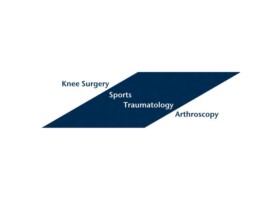
Authors:
Frank Martetschläger, Jeffrey R Padalecki, Peter J Millett
Abstract:
Traumatic posterior shoulder dislocations can lead to impression fractures on the anterior surface of the humeral head. Depending on the size, this so-called reverse Hill-Sachs lesion can engage on the posterior rim of the glenoid during internal rotation of the arm, leading to mechanical symptoms, pain or re-dislocation of the shoulder. Surgical intervention is indicated for cases of recurrent posterior dislocation due to an engaging reverse Hill-Sachs lesion to not only stabilize the shoulder but also help avoid progressive joint destruction and early osteoarthritis. It has been shown that a posterior capsulolabral repair (i.e. posterior Bankart repair) does not effectively treat instability in cases with engaging reverse Hill-Sachs lesions. There have been several different techniques described that address the bony pathology found in this types of cases. Current techniques for addressing the anterior humeral head defect can be subdivided into two groups—anatomical and non-anatomical reconstructions. The goal of the anatomical procedures is to restore the original shape of the humeral head with a variety of different bone grafting techniques. By distinction, the goal of the non-anatomical techniques is to restore stability by filling the defect with the subscapularis tendon.
In 1952, McLaughlin was the first to describe the subscapularis tenodesis using an open transposition of the subscapularis into the bony defect. Hawkins and Neer modified the technique and recommended transferring the subscapularis and lesser tuberosity into the defect. Since then, several reports have described a number of variations in the technique, all showing reliable clinical results. The purpose of this article is to describe an arthroscopic approach, the so-called ‘‘reverse remplissage’’ or ‘‘arthroscopic McLaughlin procedure’’ that can be used to tenodese the subscapularis tendon into the Hill-Sachs lesion. This all- arthroscopic procedure that avoids the morbidity of some of the open technique that predated it, allows one to address the posterior capsulolabral pathology and obviates the need to detach the subscapularis tendon or lesser tuberosity. This new technique uses a double-mattress suture, therefore providing a broader footprint with less tendon strangulation and has not been described for reverse remplissage yet.
For the complete study: Modified arthroscopic McLaughlin procedure for treatment of posterior instability of the shoulder with an associated reverse Hill-Sachs lesion
